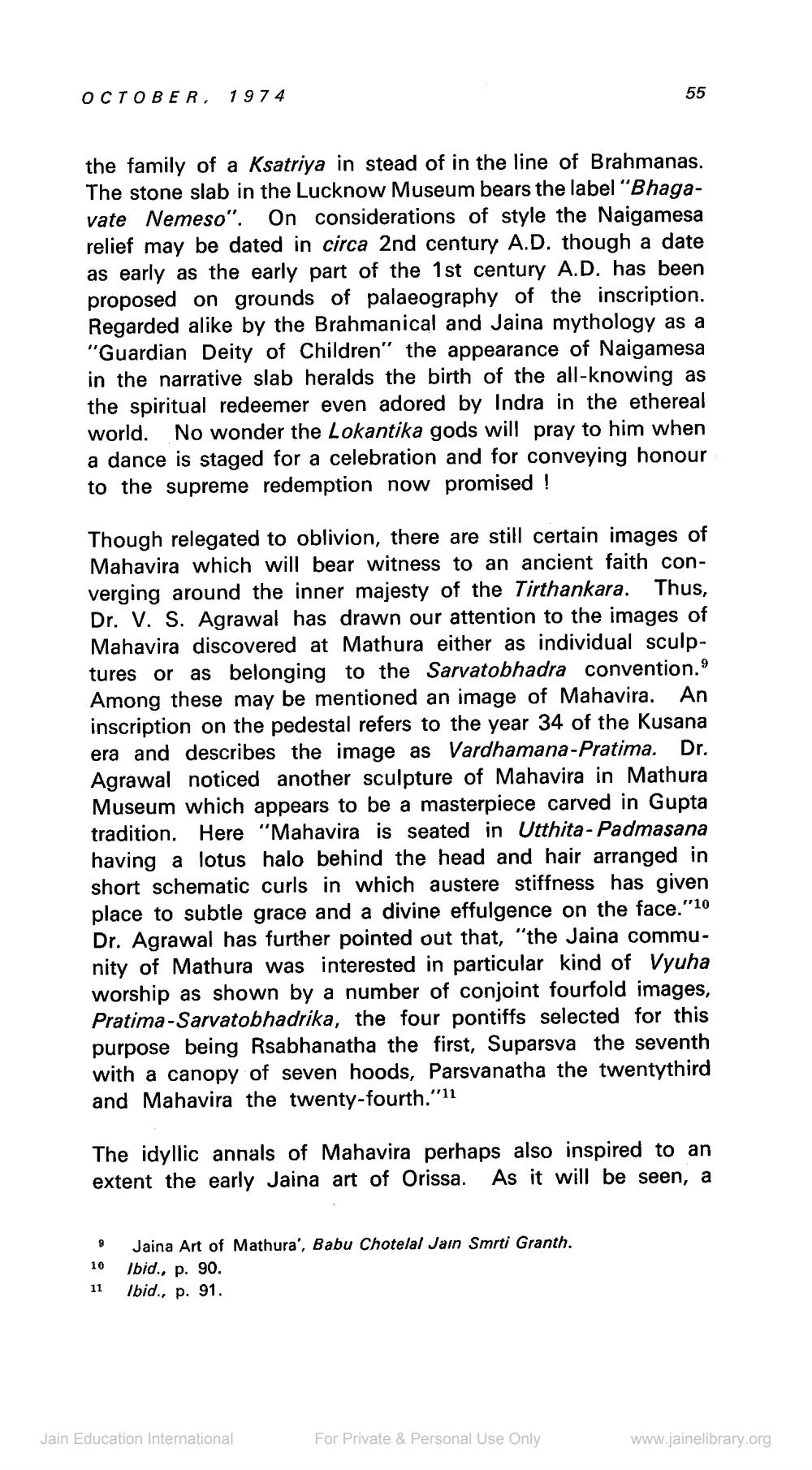Book Title: Jain Journal 1974 10 Author(s): Jain Bhawan Publication Publisher: Jain Bhawan Publication View full book textPage 7
________________ OCTOBER 1974 55 the family of a Ksatriya in stead of in the line of Brahmanas. The stone slab in the Lucknow Museum bears the label "Bhagavate Nemeso". On considerations of style the Naigamesa relief may be dated in circa 2nd century A.D. though a date as early as the early part of the 1st century A.D. has been proposed on grounds of palaeography of the inscription. Regarded alike by the Brahmanical and Jaina mythology as a "Guardian Deity of Children" the appearance of Naigamesa in the narrative slab heralds the birth of the all-knowing as the spiritual redeemer even adored by Indra in the ethereal world. No wonder the Lokantika gods will pray to him when a dance is staged for a celebration and for conveying honour to the supreme redemption now promised ! Though relegated to oblivion, there are still certain images of Mahavira which will bear witness to an ancient faith converging around the inner majesty of the Tirthankara. Thus, Dr. V. S. Agrawal has drawn our attention to the images of Mahavira discovered at Mathura either as individual sculptures or as belonging to the Sarvatobhadra convention.' Among these may be mentioned an image of Mahavira. An inscription on the pedestal refers to the year 34 of the Kusana era and describes the image as Vardhamana-Pratima. Dr. Agrawal noticed another sculpture of Mahavira in Mathura Museum which appears to be a masterpiece carved in Gupta tradition. Here "Mahavira is seated in Utthita- Padmasana having a lotus halo behind the head and hair arranged in short schematic curls in which austere stiffness has given place to subtle grace and a divine effulgence on the face."10 Dr. Agrawal has further pointed out that, "the Jaina community of Mathura was interested in particular kind of Vyuha worship as shown by a number of conjoint fourfold images, Pratima-Sarvatobhadrika, the four pontiffs selected for this purpose being Rsabhanatha the first, Suparsva the seventh with a canopy of seven hoods, Parsvanatha the twentythird and Mahavira the twenty-fourth."li The idyllic annals of Mahavira perhaps also inspired to an extent the early Jaina art of Orissa. As it will be seen, a i Jaina Art of Mathura', Babu Chotelal Jain Smrti Granth. Ibid., p. 90. Ibid., p. 91. Jain Education International For Private & Personal Use Only www.jainelibrary.orgPage Navigation
1 ... 5 6 7 8 9 10 11 12 13 14 15 16 17 18 19 20 21 22 23 24 25 26 27 28 29 30 31 32 33 34 35 36 37 38 39 40 41 42 43 44 45 46 47 48 49 50 51 52 53 54
